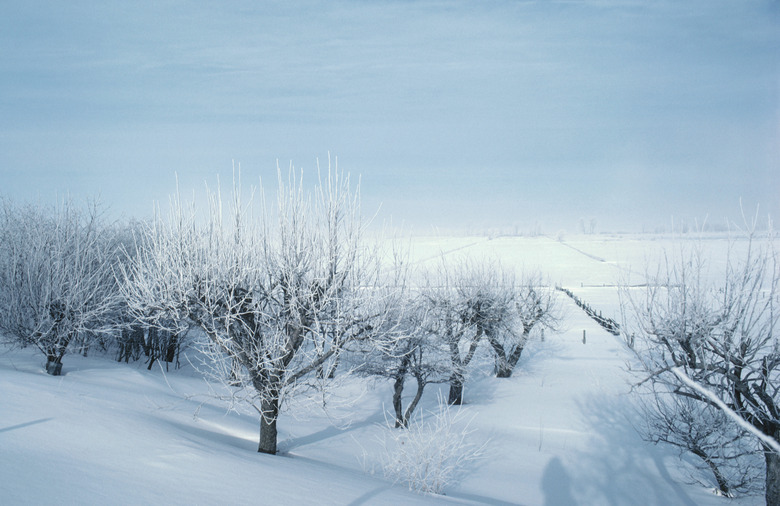Apple Tree Repair Because Of Bark Damage By Rabbits
Apple trees are a favorite food source for rabbits because they have thinner bark. Your trees can be significantly damaged even if the rabbit population is low in your area. The problem with rabbit damage is that they don't just eat the bark; they also eat living tissues underneath which contain the tree's vascular system, and without it, your tree will starve to death. What you can do to repair your tree depends on how much of this system has been damaged.
Step 1
Signs of rabbit damage include apple tree bark that has been chewed off about 18 to 20 inches from the ground. If there was snow on the ground, the damage could be much higher. Rabbit droppings may also be found around the tree. Damage to bark usually occurs between December and February, when snow cover is deepest. It can, however, occur any time after the last killing frost in the fall until mid-April.
Assessment
Step 1
When assessing the damage to your apple tree's bark, you need to look the width of the wound or how far around the tree's trunk does the damage go. A wound that extends up and down on the trunk, but does not go all the way around the trunk, is less damaging to the tree because part of the vascular system is still intact. A tree's vascular system transports water and nutrients to and from the root system. If too much of it is gone, the tree will die.
Step 2
- Signs of rabbit damage include apple tree bark that has been chewed off about 18 to 20 inches from the ground.
Partial Damage
Step 1
If the damage to the bark has not gone all the way around the tree, there is a chance that the tree can be saved. If the damage is less than 25 percent of the circumference of the tree, the wound will heal itself. Remove any loose bark or wood from around the wound. Leave the wound exposed to the air and let nature take its course. Do not cut around the wound, process known as "scribing," because it only makes the wound worse.
Major Damage
Step 1
If the bark has been removed over more than halfway around the circumference of the tree, then it still may survive. You will notice a significant reduction in the tree's vigor and it may lose branches. Corrective pruning, regular watering and fertilization can help keep the tree healthy until it recovers. Do not apply wound dressings, pruning paints or use other protective devices — they actually increase decay rather than protecting the tree. If the damage extends all the way around the tree, then the tree needs to be replaced.
Step 2
- If the damage to the bark has not gone all the way around the tree, there is a chance that the tree can be saved.
- If the bark has been removed over more than halfway around the circumference of the tree, then it still may survive.
References
- Iowa State University Extension; Rabbit Damage to Trees and Shrubs; Richard Jauron; March 2010
- South Dakota State University; Rabbit Damage on Trees and Shrubs; Chris Zdorovtsov
- Iowa Cooperative Extension Service; Rabbit Damage to Tree Plantings; Robert B. Moorman, et al.
- Melinda Meyers.com; Rabbit Damage; Melinda Meyers
